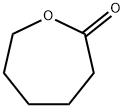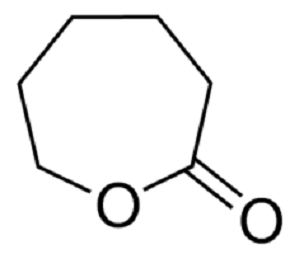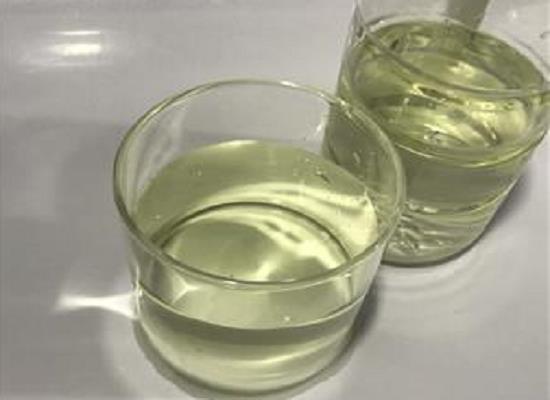ε-Caprolactone: Applications in Nanotechnology and its Toxicity
General Description
ε-Caprolactone-modified polyethylenimine nanocarriers have revolutionized siRNA delivery in nanotechnology. By enhancing stability, promoting cellular uptake, and facilitating endosomal escape, these nanocarriers show promising results in gene therapy, particularly in triggering a potent RNA interference (RNAi) response. Despite its widespread use, ε-caprolactone exhibits minimal toxicity, as evidenced by studies confirming its biocompatibility and non-carcinogenic properties. This safety profile solidifies ε-caprolactone's position as a crucial component in the development of safe and effective drug delivery systems, ensuring its continued application in innovative medical treatments.

Figure 1. ε-Caprolactone
Applications in Nanotechnology
Enhanced siRNA Delivery
ε-Caprolactone plays a pivotal role in the field of nanotechnology, especially as an effective component in creating nanocarriers for siRNA delivery. The challenge in RNA interference (RNAi) therapy, a cutting-edge approach for treating various diseases, lies in the safe and efficient delivery of siRNA to target cells. To address this, ε-caprolactone-modified polyethylenimine (PEI-CL) has been developed as a promising nanocarrier. The synthesis of ε-caprolactone-modified polyethylenimine involves a straightforward ring-opening reaction. This modification significantly enhances the properties of the original polyethylenimine, making it more suitable for biomedical applications. The primary advantage of incorporating ε-caprolactone into the polymer structure is the increased stability of the siRNA, protecting it from degradation in biological environments such as serum. This stability is crucial for maintaining the therapeutic efficacy of the siRNA throughout the delivery process. Furthermore, ε-caprolactone modification aids in the cellular uptake and endosomal escape of the siRNA. This is vital for ensuring that the siRNA reaches the cytoplasm of target cells where it can effectively engage the RNAi machinery. Studies using chemical exchange saturation transfer magnetic resonance analysis and fluorescence imaging have demonstrated the enhanced cellular uptake and endosomal release capabilities of ε-caprolactone-modified nanocarriers. In vivo studies, particularly with models like the HCT-116 colon tumor xenograft, have shown that ε-caprolactone-modified PEI-CL/siRNA nanocomplexes trigger a strong RNAi response, indicating high gene silencing efficiency. This efficiency is further enhanced by the simultaneous cotransfection of siRNA and DNA plasmid, showcasing the versatility and potential of ε-caprolactone-modified nanocarriers in gene therapy applications.
Advancements in Nanocarrier Design for RNAi Therapy
ε-Caprolactone-modified polyethylenimine represents a significant advancement in the development of nanocarriers for siRNA delivery in nanomedicine. Its ability to protect, deliver, and enhance the efficacy of siRNA underscores its potential to revolutionize RNAi therapy outcomes. By improving siRNA stability, facilitating cellular uptake, and promoting endosomal escape, ε-caprolactone-modified nanocarriers offer a promising solution for enhancing the therapeutic benefits of RNA interference in treating various diseases. 1
Toxicity
Toxicological Assessments
ε-Caprolactone is extensively utilized in the biomedical field, particularly in the fabrication of biodegradable polymeric materials for drug delivery systems. Its potential toxicity is a critical concern, given its widespread application in medical devices and implants. Notably, ε-caprolactone has been subject to various toxicological assessments to ensure its safety for clinical use. Research into the toxicity of ε-caprolactone reveals encouraging results regarding its biocompatibility and non-toxic nature. In studies assessing mutagenic activities, ε-caprolactone demonstrated no mutagenic effects in bacterial strains such as Salmonella typhimurium, specifically strains TA1530 and TA1535. These results are crucial as they indicate that ε-caprolactone does not induce genetic mutations that could lead to cancer or other genetic disorders. Further, ε-caprolactone was tested for its effect on mitotic recombination in yeast, specifically using the Saccharomyces cerevisiae D3 strain.
Safety Profile
The absence of increased mitotic recombination further supports the safety profile of ε-caprolactone, suggesting it does not cause genetic instability in eukaryotic cells. Additionally, in a broader scope involving mammalian systems, ε-caprolactone was evaluated using a Syrian hamster embryo cell transformation system. Among several direct-acting alkylating agents tested, ε-caprolactone was the only compound that did not exhibit carcinogenic properties. This is particularly noteworthy as it reinforces the compound’s suitability for long-term implantation in drug delivery systems without the risk of inducing cellular transformation—a key factor in cancer development. Overall, the toxicity profile of ε-caprolactone is favorable, marking it as a safe choice for medical applications. Its non-mutagenic and non-carcinogenic properties ensure that ε-caprolactone can be effectively used in drug delivery systems without compromising patient safety. This robust safety record supports the continued use of ε-caprolactone in developing new and innovative medical treatments. 2
Reference
1. Xie L, Tan Y, Wang Z, et al. ε-Caprolactone-Modified Polyethylenimine as Efficient Nanocarriers for siRNA Delivery in Vivo. ACS Appl Mater Interfaces. 2016; 8(43): 29261-29269.
2. Caprolactone. National Center for Biotechnology Information. 2024; PubChem Compound Summary for CID 10401.
);Related articles And Qustion
Lastest Price from ε-Caprolactone manufacturers
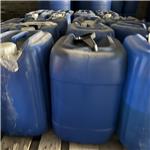
US $10.70/kg2024-09-19
- CAS:
- 502-44-3
- Min. Order:
- 10kg
- Purity:
- 99%
- Supply Ability:
- 10000kg
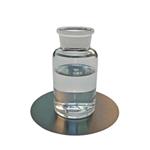
US $10.00-5.00/kg2024-09-13
- CAS:
- 502-44-3
- Min. Order:
- 1kg
- Purity:
- 99%
- Supply Ability:
- 10 tons
